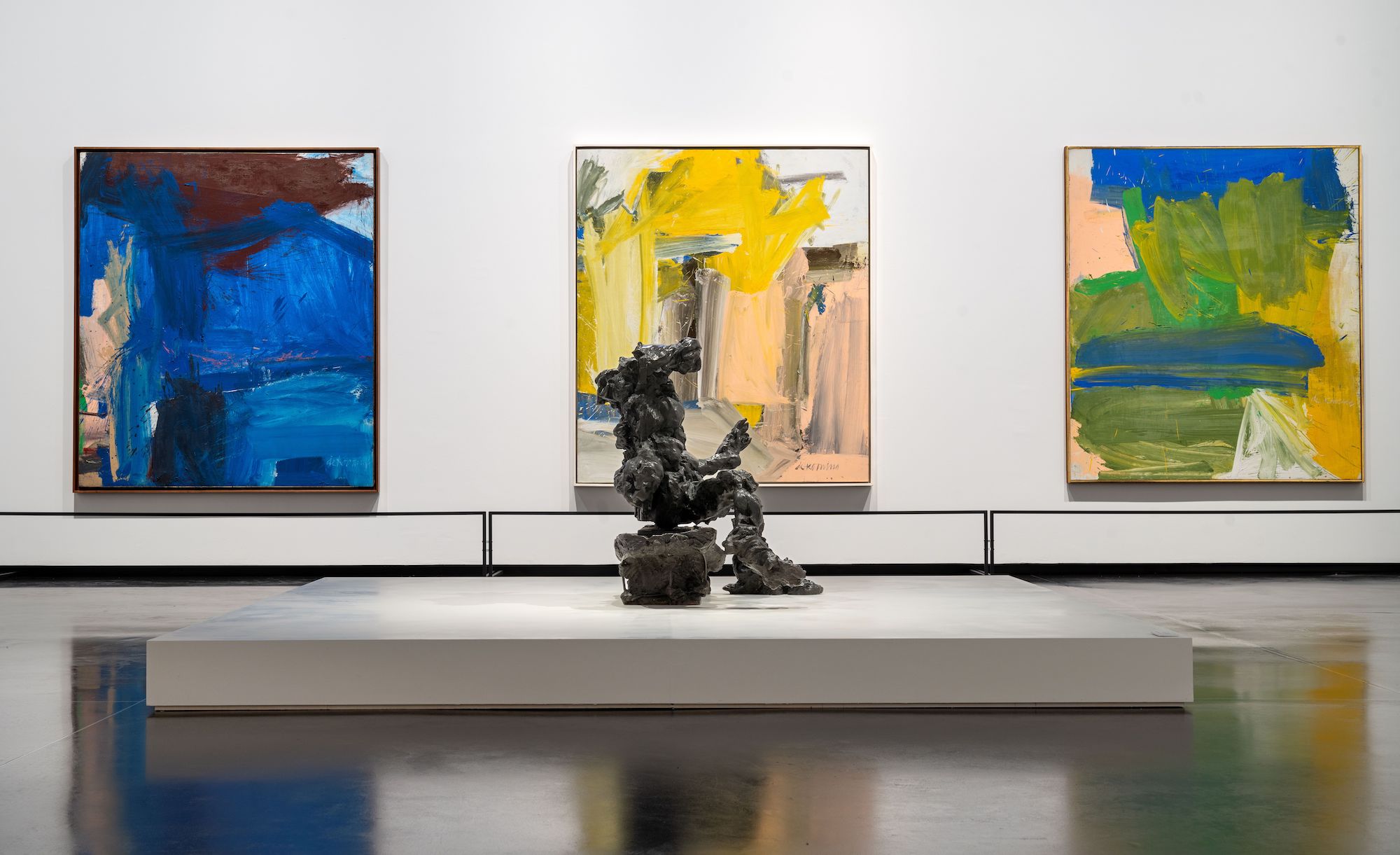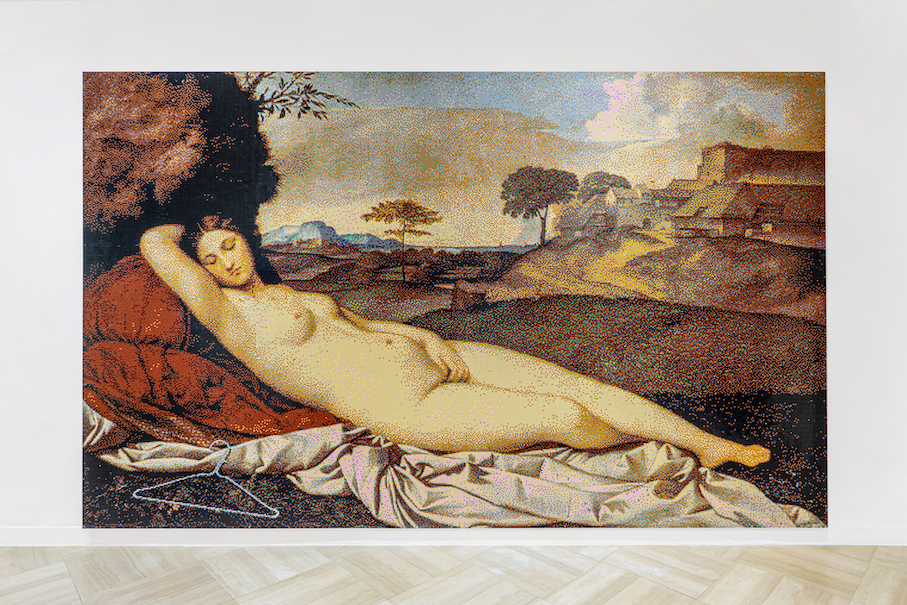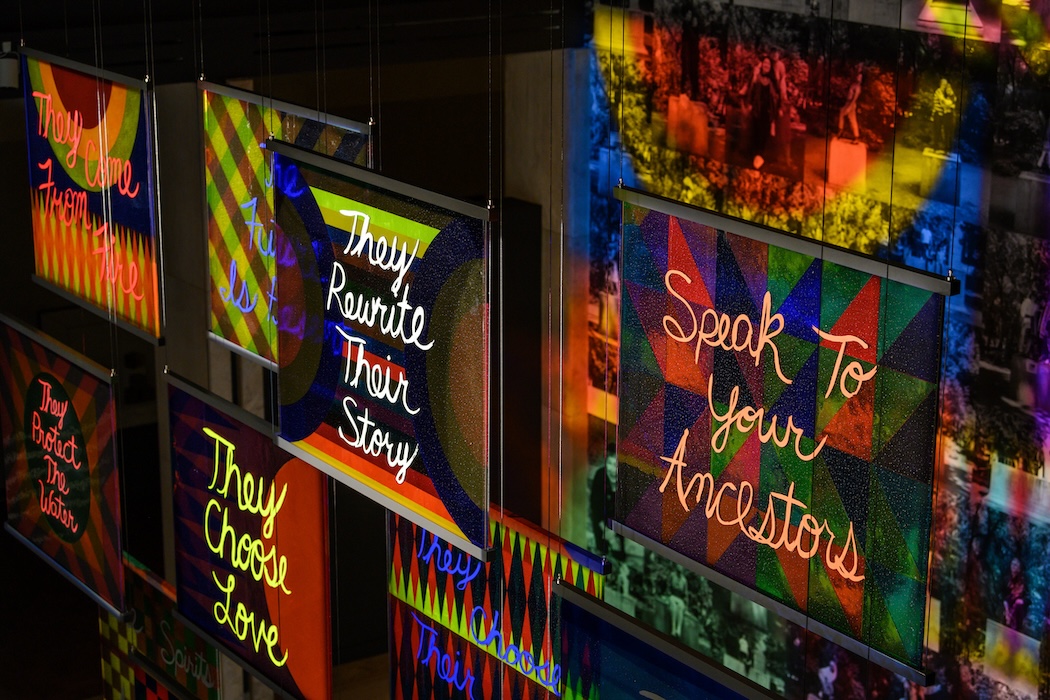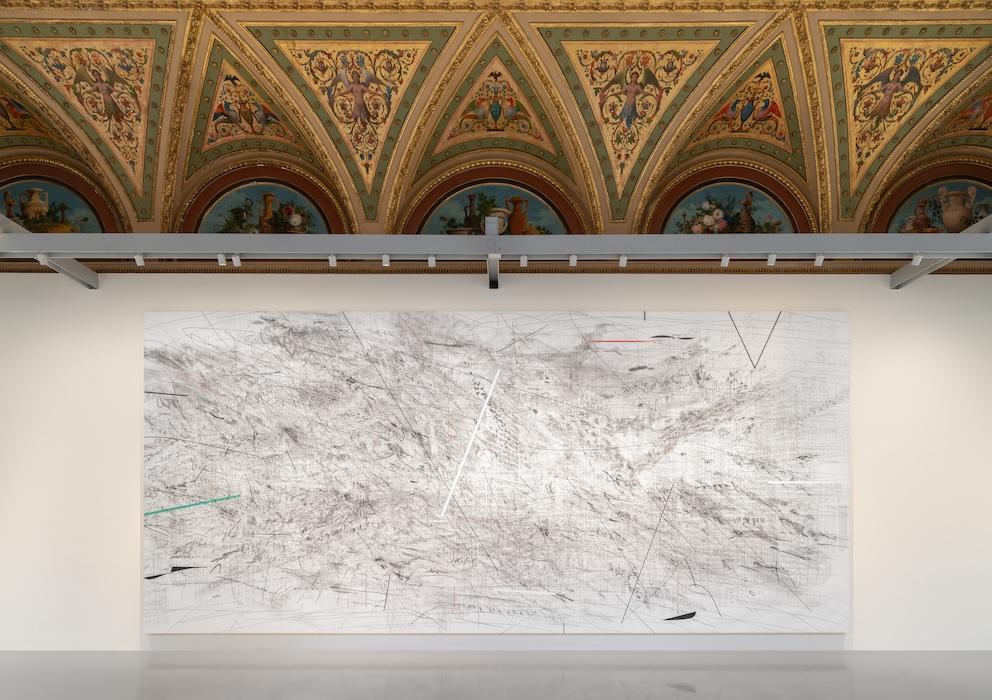In 1959, at the zenith of his career, Willem de Kooning embarked on a transformative journey to Italy. Fresh from the success of his solo exhibition, where every brushstroke resonated with discerning collectors, the 55-year-old maestro reached a long-awaited financial stability. This Italian pilgrimage marked his return to European soil after nearly three decades since bidding adieu to his native Rotterdam and embracing the shores of the United States at the age of 22. Throughout the labyrinthine alleys of time, de Kooning meticulously etched his legacy as a painter of unwavering commitment, carving out a niche revered by peers and patrons alike, elevating him to the pantheon of artistic luminaries.
De Kooning‘s prowess as a painter and draftsman has been celebrated, his venture into sculpture aligns him with the tradition of modern bronze. Within the hallowed halls of Gallerie dell’Accademia, akin to his sculpting peers, de Kooning delved into the expressive realms of bronze, crafting pieces where the rawness of the artist’s touch and the depth of psychological resonance take precedence. Unlike some contemporaries who dismissed the weight of artistic lineage, de Kooning remained tethered to tradition, cherishing the artistry of those who came before him. His sojourns in Italy afforded him the opportunity to witness first-hand the masterpieces of Titian, Tintoretto, and Bernini, igniting his imagination and enriching his creative repertoire.
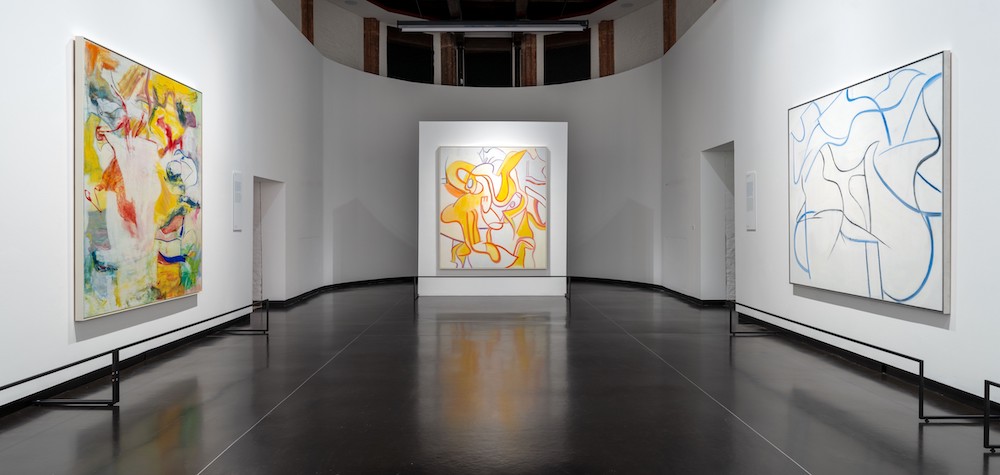
Installation View. “Willem de Kooning and Italy”, Gallerie dell’Accademia. Venice, 2024. Photo by Matte de Fina. © 2024 The Willem de Kooning Foundation.
The Lasting Impact of Italy on Willem de Kooning
Although his initial visit to Venice and Rome spanned less than a week, the allure of the Italian capital captivated him so deeply that he swiftly returned. Reflecting on his experience, de Kooning remarked to an Italian interviewer, “New York, which had seemed so vast to me, after Rome it seemed cramped. In my studio on Tenth Street I kept repeating to myself: better go back to Rome.” His sojourn extended to almost four months, from late September 1959 to early January 1960. Despite the success of his recent exhibition, de Kooning saw his time in Italy as an opportunity to invigorate his artistic endeavors and embark on a new creative journey.
Immersing himself in the Roman artistic milieu, de Kooning fostered meaningful connections that facilitated a rich exchange of ideas. A decade later, in the summer of 1969, he revisited Italy as a distinguished guest of “The Festival of Two Worlds” in Spoleto, yet his focus remained centered on Rome. A serendipitous encounter with an old acquaintance reignited his interest in sculpture, marking a pivotal moment of experimentation for the seasoned artist.
De Kooning’s Summer of ‘69
And so it was: the sultry Roman summer of 1969, amidst the ancient streets steeped in history, de Kooning embarked on a new artistic endeavor, crafting his inaugural bronze sculptures. From his nimble hands emerged thirteen diminutive yet captivating pieces, each bearing the imprint of his creative spirit. These initial forays into sculpture ignited a fervent passion within the artist, leading him to venture into larger, more ambitious projects upon his return to the bustling streets of New York from 1971 to 1974.
Among these monumental works stands Hostess, a striking embodiment of de Kooning’s irreverent wit and keen observational prowess. Poised in a languid posture, she exudes an air of nonchalant elegance, seemingly at ease as she leans against an imaginary bar, her legs cascading forward with graceful abandon. Resting her left elbow upon the sturdy bronze pedestal behind her, her hand delicately poised in mid-air, evoking the image of one holding a cigarette, she wears a mischievous grin that hints at a wealth of untold stories. Through “Hostess”, de Kooning masterfully captures the essence of a bygone era’s grand dame, infusing the sculpture with a palpable sense of vivacity and charm that continues to captivate viewers with its timeless allure.
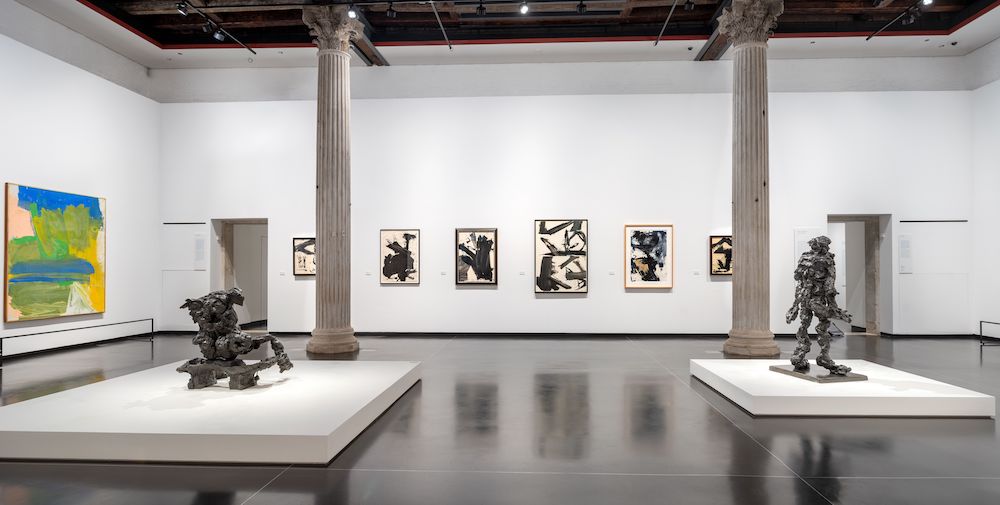
Installation View. “Willem de Kooning and Italy”, Gallerie dell’Accademia. Venice, 2024. Photo by Matte de Fina. © 2024 The Willem de Kooning Foundation.
“Willem de Kooning and Italy” at Gallerie dell’Accademia
Displayed at Gallerie dell’Accademia in Venice are two of the monumental sculptures crafted by de Kooning after his transformative return to Rome in 1969, juxtaposed with the vibrant paintings that served as their predecessors. In a captivating exploration, de Kooning persistently toyed with the delicate balance between abstraction and figuration, unleashing a torrent of bold innovations that defied conventional artistic boundaries.
The exhibition also fosters an engaging dialogue between painting, sculpture and drawings from the 1960s and 1970s, offering a multifaceted exploration of de Kooning’s artistic journey. Among the highlights are four ink drawings created during his time in Spoleto in 1969, juxtaposed with a collection of intimate, gestural drawings that conceptually resonate with his sculptures. These drawings reveal de Kooning’s masterful fragmentation of the figure, skillfully intertwining vacant spaces with dynamic, assertive lines.
Curators Gary Garrels and Mario Codognato draw parallels between de Kooning’s final paintings and the Italian Baroque, particularly citing the influence of Gian Lorenzo Bernini, whose omnipresence in Rome Garrels vividly describes as “pervasive” and “magnificent.” While the overt references to Bernini may not be apparent in de Kooning’s 1980s paintings, Garrels suggests a subtle osmosis of influence, with elements of Bernini’s “swooping, swirling lines and voluptuous volumes” echoing in de Kooning’s defiance of gravity.
During his time in Rome from September 1959 to January 1960, Willem de Kooning lived in a studio space on Via Margutta, near the vibrant Piazza del Popolo, graciously lent to him by the esteemed Italian painter Afro. Stripped of his customary tools and materials, de Kooning embarked on a journey of artistic exploration, confining himself to working on large sheets of exquisite Fabriano paper, upon which he applied black enamel paint, often infused with a ground substance, commonly believed to be pumice stone.
The resulting creations bear witness to the artist’s bold experimentation with form and structure, some adorned with elements of collage, where de Kooning ingeniously tears and recombines previously painted sheets. Notably, many of these works were inscribed to friends in Rome, serving as tangible tokens of de Kooning’s swift integration into the city’s vibrant artistic milieu. His enduring affection for Italy, particularly Rome, was palpable in his writings, with his wife, Elaine, capturing his sentiment in 1959: “He adores Italy, particularly Rome, and you feel so welcome.” This immersion in Italian culture left an indelible mark on de Kooning, shaping his artistic sensibilities for decades to come.
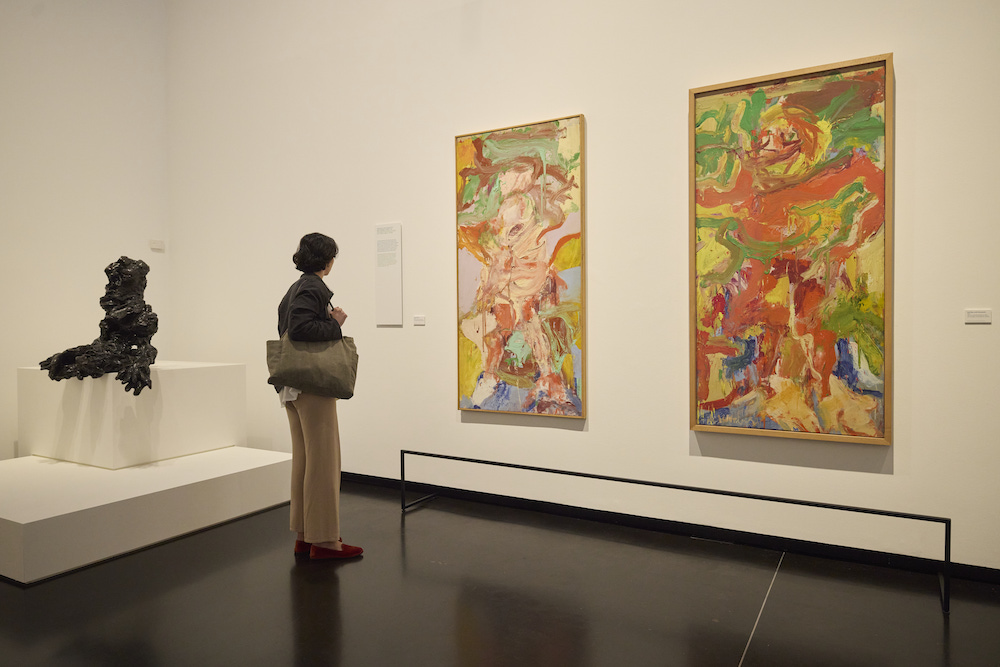
Installation View. “Willem de Kooning and Italy”, Gallerie dell’Accademia. Venice, 2024. Photo by David Levene. © 2024 The Willem de Kooning Foundation.
In an interview Charlotte Willard in 1969, de Kooning reflected on his encounter with Michelangelo’s sculpture Day in Florence a decade earlier, remarking on the profound sense of contraction and levitation inherent in great art. This theme resonates throughout de Kooning’s work of the 1960s and 1970s, evident in pieces like Cross-Legged Figure and Floating Figure, where bodies seem to defy gravity, suspended in space. The summer of 1969 marked another significant chapter in de Kooning’s artistic journey, as he delved into sculpture under the mentorship of his friend Herz Emanuel in Rome.
De Kooning Embarks on an Exploration of Bronze Sculptures
This transformative experience ignited a fervent exploration of larger-scale bronze sculpture upon his return to East Hampton, unfolding over a three-year period of intense engagement with the medium. Guided by his studio assistant, sculptor David Christian, de Kooning pushed the boundaries of form and expression, deconstructing and reassembling the human body in ways that mirrored the complexities of his abstract paintings from the mid to late 1970s. This holistic approach to artistic creation underscores de Kooning’s enduring legacy as not only a master painter but also a trailblazing sculptor, deeply rooted in the traditions of craftsmanship and artistic inquiry.
De Kooning’s profound reflections on Italian church art and the liberation from gravity find resonance in his late career masterpieces. His words echo in the ethereal, weightless quality of his artworks, carrying the imprint of a lifetime immersed in painting and art history. Resonating with the dynamic twists of the Baroque era, akin to those of Tintoretto and Rubens, as astutely observed by Clement Greenberg in 1953, de Kooning’s late works stand as exemplars of painterly eloquence.
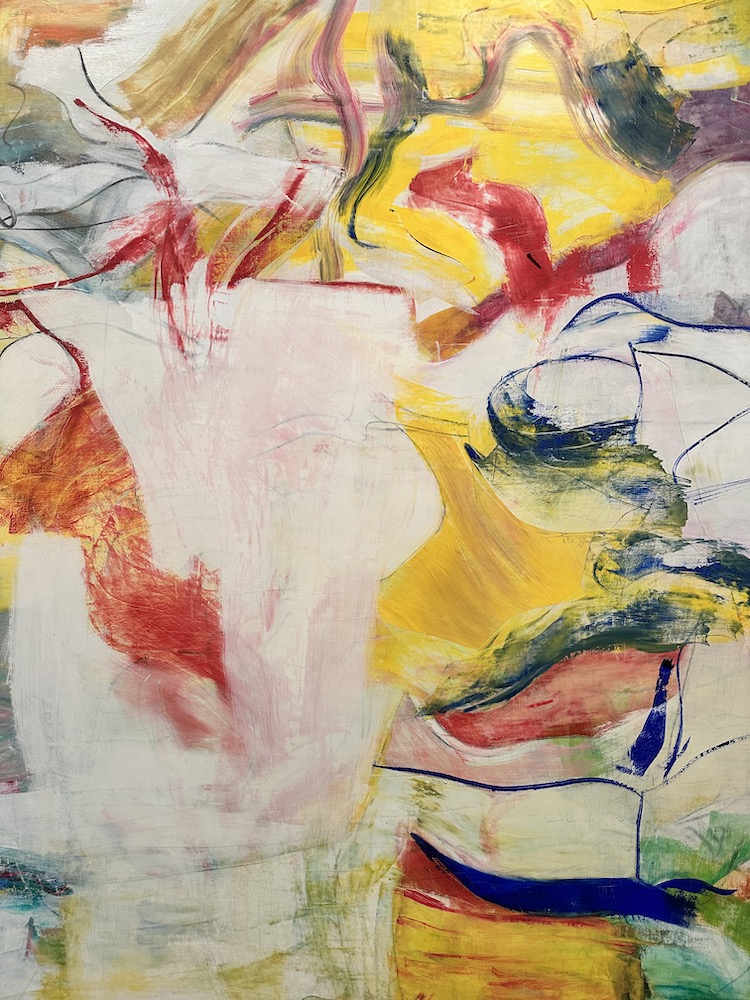
Detail of “Untitled VI”, 1984. Photo by Ana Novi. © Whitewall.
Nowhere is his connection to tradition more evident than in the Gallerie dell’Accademia, where de Kooning’s legacy from the Venetian Renaissance is palpable. Art historian David Rosand coined the phrase “eloquence of the brush” to encapsulate Titian’s mastery of oil paint in the 16th century, a concept that resonated deeply with de Kooning. In his early career, he enthralled friends with discussions on “the Venetians and their brushstrokes, no one could do better brushstrokes.” De Kooning’s late works, among the most exquisite of his oeuvre, stand as seamless, yet powerful expressions of artistic genius.
Across both sojourns to Italy, de Kooning produced seminal bodies of work that would leave an indelible mark on the trajectory of his career. This exhibition stands as the foremost showcase of de Kooning’s oeuvre in Italy since his participation in the Venice Biennale seven decades prior. It represents a concerted effort to delve deeper into the impact of his Italian visits and the profound influence of Italian art and culture on the evolution of his artistic vision and professional journey.
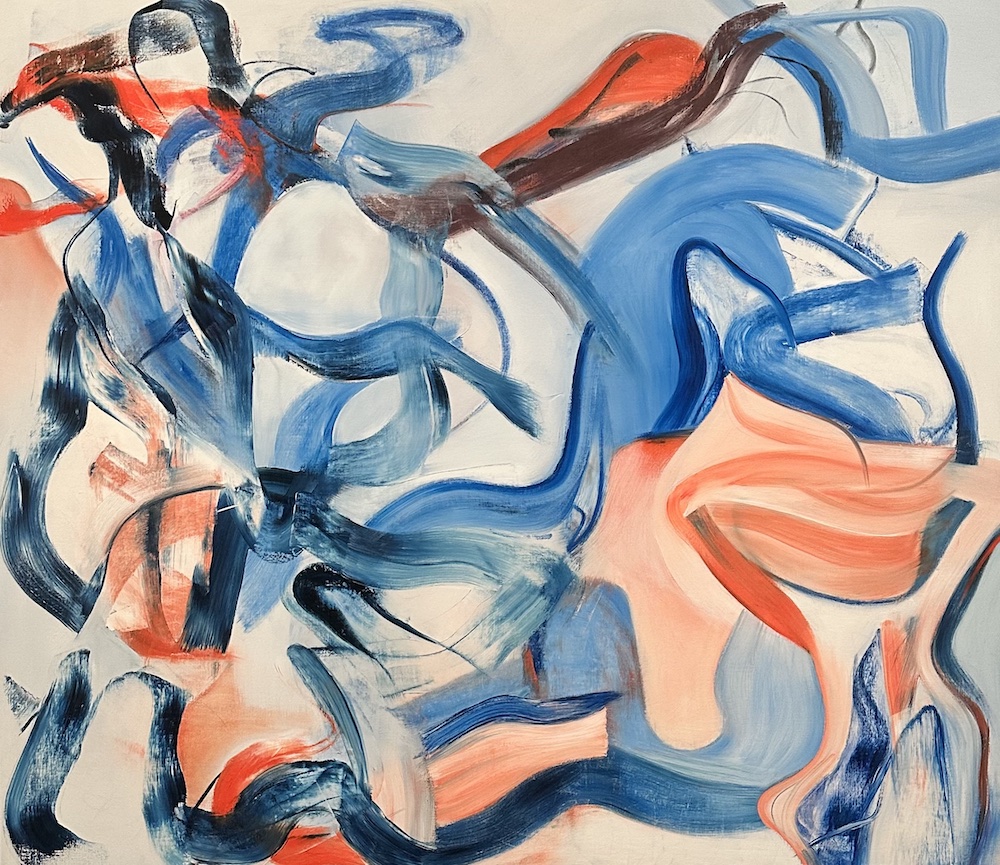
Photo by Ana Novi. © Whitewall.



